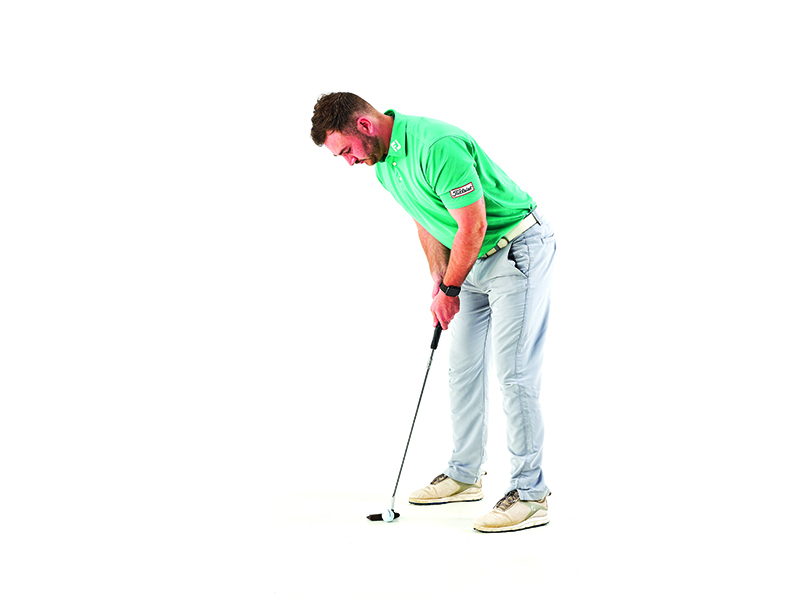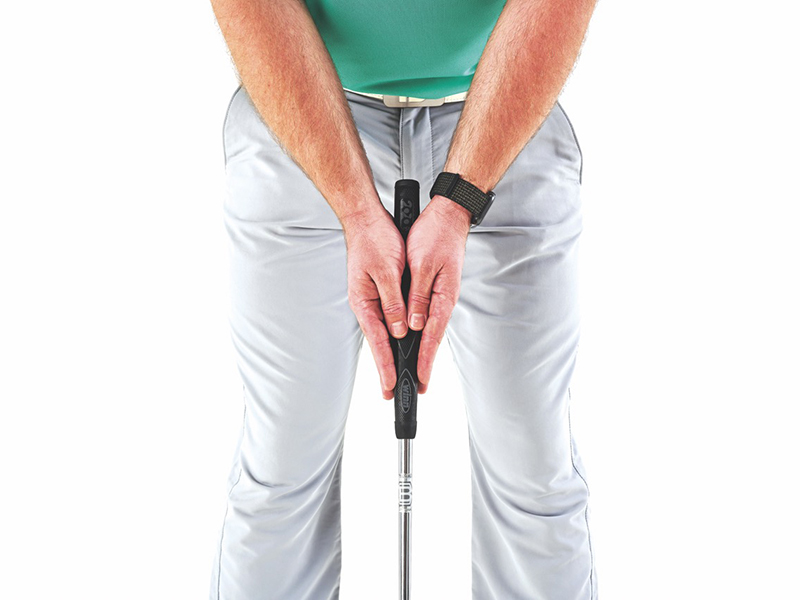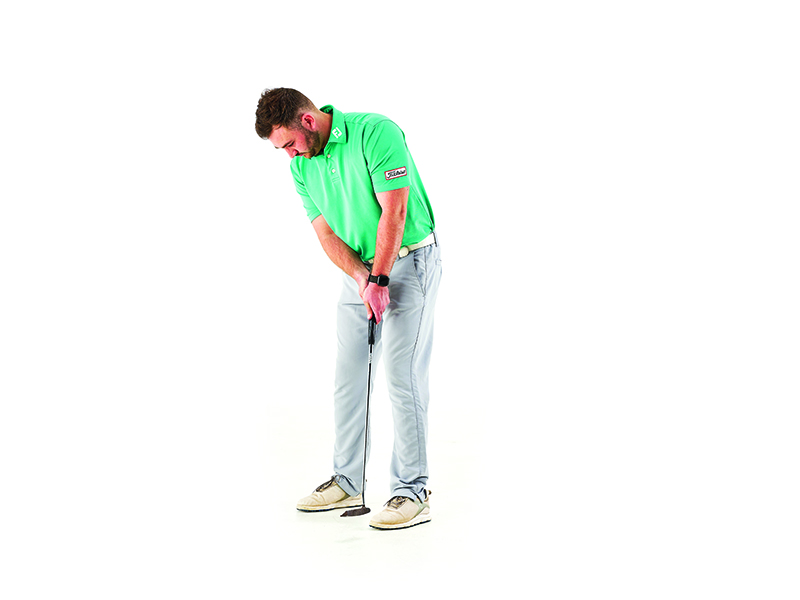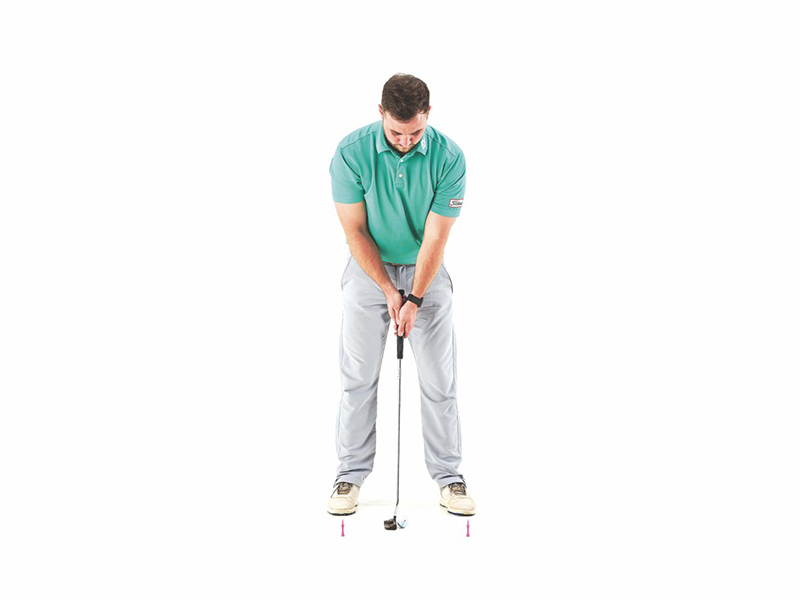I'm Confident These 9 Tips Can Help You Putt Like A Pro... Say Goodbye To Misreads and 3-Putts!
These 9 putting tips, from Golf Monthly Top 50 Coach Joshua Mayo, will help you to improve your distance control, read, posture and success rate on the greens


Michael Weston
This game is great when it feels as though you can’t miss on the greens – when the hole looks the size of a bucket. Wouldn’t it be nice if that happened a little more often? Even better if, when it did, we knew exactly why we were putting so well and what it was that we were doing correctly.
I love teaching the concept of putting – the skill and art of what is a game within a game. In this article, I’ll help you to nail some of the basics, so that you can groove a more solid and confident stroke. I’m certain this curation of putting tips and the best drills will help you to become a better putter, capable of shooting much lower scores and banishing 3-putts for good...
1. The Line On The Ball
I do this as part of my routine for every single putt. For a breaking putt, I line the ball up with the widest point of the break. For a straight one, just straight through the middle of the hole.
By matching up the line on my putter with the ball, I’m more confident of making a centred strike, and when I know the aim is correct, I only have to worry about pace. It’s crucial that the line is not ‘leaning’ to one side or the other. It takes practice, but I’d recommend giving it a go – it can really help your green-reading.
2. Posture And Alignment
When your eyes stray too far from directly above the ball, it’s very hard to see the line of a putt. I see this a lot, and golfers can change from hole to hole without noticing. When golfers get this wrong, their perception of alignment when putting will be greatly affected.

3. Neutral Hands
Ball position is crucial to putting success. Centred to slightly forward of centre will encourage a zero to ever so slightly positive angle of attack. This can come down to personal preference and will depend on how you see the putt.
When the hands aren’t neutral under the body, it encourages either positive or negative shaft lean. When you strike up or down on the ball, that’s when you can make it skid and bounce, which will make it much harder to achieve consistent distance control.
Subscribe to the Golf Monthly newsletter to stay up to date with all the latest tour news, equipment news, reviews, head-to-heads and buyer’s guides from our team of experienced experts.
4. Keep The 'Y' Shape
This is a great drill to maintain structure through the forearms into the shaft. Try to maintain the angle demonstrated on the image below to create a pendulum with the putter head.
Picture the letter ‘Y’ and try to maintain it throughout the stroke using the grip shown as this will help you to feel the putter grip more in the palms of your hands as opposed to the fingers. Hit a few putts. It will also help you to put a more consistent roll on the ball.

5. Shoulders Parallel To Target Line
The direction the shoulders face affects the club’s path and the direction of the stroke. If they’re out, your start line will be affected and you may also put sidespin on the ball.
To start the ball end over end, you need the shoulders to be parallel to your target line. A lot of the poor putters I see don’t have a neutral shoulder line, so I get them to put an alignment stick under their armpits. This drill also helps the shoulders to ‘rock’ and go up and down rather than around and encourages a brushing stroke through the back of the ball rather than a ‘hit’.
6. Stay Down Through The Stroke
Another very common mistake is lifting the lead shoulder and lead elbow too soon, or coming up and out of the putt very quickly. Typically, the path of the putter then moves inside, instead of moving in a straight line through the back of the ball.
You’re likely to pull putts as a result of this. Putting with an alignment stick under the armpits can again help to address this problem. Instead of looking up immediately to see where the ball has gone, let it travel for a few feet. On short putts, listen to the ball going in, rather than looking up for it.

7. Nail Your Start Line
Set up for a mid-length putt and place two tees halfway between your ball and the hole to create a gate. Creating an interim target closer to you than your actual target can really help you to nail your start lines and hit more on-target putts as a result.
8. Pace Control Drill
Don’t concern yourself with putting towards a hole here – rather, just work on matching up the length of your backswing and follow-through. Taking too big a backswing and then quitting as you go through the hitting area is a common mistake among those who struggle on long-range putts.
Set up two tees around 2 feet apart, and move your putter head back and forward between the markers. Add in a ball, and observe how far the ball travels when hit with this length of backswing and follow through. This is a good drill to try prior to teeing off, especially if you’re playing on greens that you’ve not putted on before.

9. Centred Strike
This drill will help you to find the centre of the putter face more often and produce straighter putts. Set up a tee gate so there are just a few millimetres for the putter to pass through on each side.
If you hit one of the tees, the ball is likely to start off line and with sidespin. The castle tees are excellent for this drill because you want the putter to be passing through the middle section (the arc).
Give it a try and you will notice you hit your putts a lot more sweetly on the course.

Location: Windmill Leisure
Joshua has been playing golf pretty much his entire life with his dad, Paul, being a former Amateur champion and Walker Cup player. He brings a holistic approach to coaching for all ages and abilities and he will use a combination of modern teaching methods as well as the traditional methods. Is an all-round sports fanatic.
Teaching philosophy:
As a whole I like to consider my teaching to be holistic. With qualifications in sports psychology and strength and conditioning I like to consider myself able to deal with any scenario. On a daily basis I see people need to improve their physical well-being just by watching them swing a club. Some other people have issues that can’t be seen physically and can only be found when you dig a bit deeper into their mindset. Some people just want to have a friendly chat and the smallest of improvements in their golf can make their day. Everyone needs specific and individual attention but from a golf coaching perspective having good posture and trusting your own swing from that point is crucial.
Assessing a student's needs:
Ask them how they learn best. People learn in different ways. Asking them what job they do can often be a good indicator of how they learn. Some people love seeing video analysis with trackman data whereas other people like to feel the movements and learn from the feedback of the strike and ball flight. Others like to see explanation demonstrations so showing and explaining can be useful.
Greatest teacher:
My dad, Paul Mayo. He was fortunate enough to play in the Masters with Jack Nicklaus so that alone means he has plenty of experience and stories to tell. His lessons are always engaging and he keeps things extremely simple. He coaches by eye and has an amazing understanding of people's needs. He has developed young golfers as well as elite and lady golfers. His attitude towards the game is inspiring and contagious.
- Michael WestonContributing editor